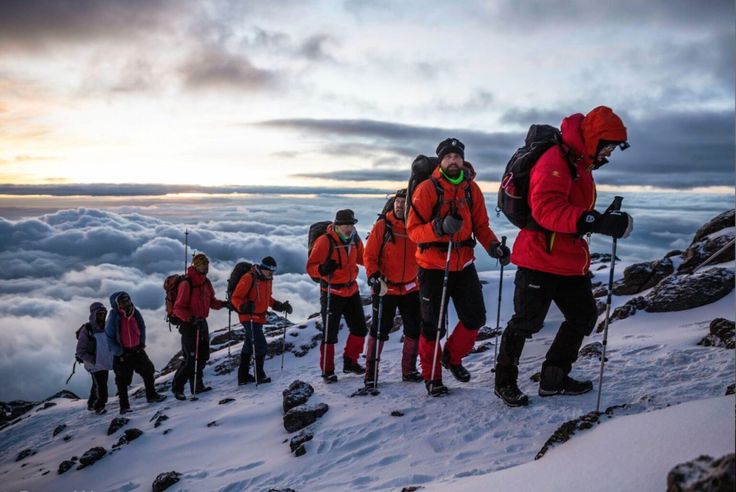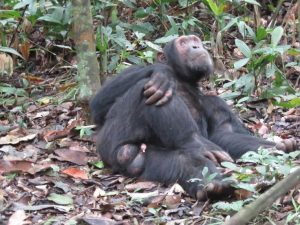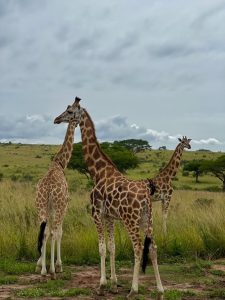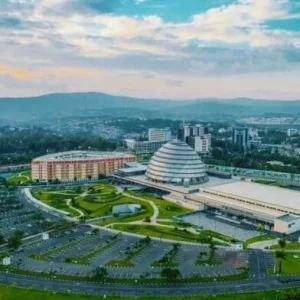Mount Kilimanjaro is Africa’s tallest mountain, standing at 5,895 meters (19,341 feet) above sea level. Located in Tanzania, it is the highest free-standing mountain in the world and a UNESCO World Heritage Site. Every year, thousands of trekkers from around the globe come to take on the challenge of reaching Uhuru Peak, the mountain’s highest point. Climbing Mountain Kilimanjaro
Climbing Kilimanjaro is not a technical climb, but it requires preparation, endurance, and knowledge of the routes, weather, and altitude challenges. This guide covers everything you need to know, including when to go, costs, fitness requirements, and answers to the most searched questions about climbing Kilimanjaro. Climbing Mountain Kilimanjaro.
How many days does it take to climb Kilimanjaro?
The duration of a Kilimanjaro climb depends on the chosen route and acclimatization needs. On average, climbs take 5 to 9 days.
- Shorter climbs (5–6 days) – Quicker routes like Marangu or Umbwe are physically demanding and have lower success rates due to less time for acclimatization.
- Longer climbs (7–9 days) – Routes such as Machame, Lemosho, or Northern Circuit offer better acclimatization and higher summit success rates.
Most trekking experts recommend at least 7 days to improve your body’s adjustment to altitude.
Which is the easiest route to climb Kilimanjaro?
The Marangu Route is often considered the easiest in terms of terrain and facilities. It is the only route with hut accommodation, reducing the need for tents. However, its shorter duration (usually 5–6 days) makes acclimatization harder, so summit success rates are lower than longer routes.
For a balance between comfort and success, the Lemosho Route is a great choice. It is longer, scenic, and allows gradual altitude gain.
What is the hardest route on Kilimanjaro?
The Umbwe Route is the most challenging due to its steep ascent and short acclimatization period. It is recommended only for experienced trekkers who are confident in their ability to handle rapid altitude gain. The route offers stunning views but has a lower summit success rate compared to other routes.
How much does it cost to climb Mount Kilimanjaro?
The cost varies depending on the route, duration, and level of service. On average:
- Budget climb: USD 1,500–2,000 per person.
- Mid-range climb: USD 2,000–3,000 per person.
- Luxury climb: USD 3,500–5,000+ per person.
Costs typically include park fees, guide and porter wages, meals, camping or hut accommodation, and transport to the trailhead. International flights, visas, travel insurance, and personal gear are extra.
Can a beginner climb Kilimanjaro?
Yes, beginners can climb Kilimanjaro, provided they prepare physically and mentally. The climb requires no technical mountaineering skills, but trekkers must be ready for long hiking days, changing weather, and altitude. Beginners should choose a longer route like Machame or Lemosho for better acclimatization.
Do you need oxygen to climb Kilimanjaro?
Most climbers do not require supplemental oxygen for Kilimanjaro. However, reputable operators carry emergency oxygen and medical kits for safety. The best way to avoid altitude-related issues is to choose a longer route, climb slowly, and stay hydrated.
What is the success rate of climbing Kilimanjaro?
Success rates vary by route and duration:
- 5–6 day climbs: Around 50–65% summit success rate.
- 7–9 day climbs: Around 85–95% summit success rate.
Choosing a longer route greatly improves your chances of reaching Uhuru Peak.
What is the best month to climb Kilimanjaro?
The best times are during the dry seasons:
- January to early March – Warm weather, clear skies, fewer climbers.
- June to October – Cool and dry, with excellent visibility.
The rainy seasons (April–May and November) make trails slippery and views less clear, though fewer trekkers visit during these months.
What should I pack for climbing Kilimanjaro?
Essential packing items include:
- Clothing: Base layers, insulating mid-layers, waterproof jacket, warm hat, gloves, hiking pants, and thermal socks.
- Footwear: Sturdy, broken-in hiking boots.
- Gear: Sleeping bag rated for sub-zero temperatures, trekking poles, headlamp, water bottles, and a backpack.
- Personal items: Sunscreen, lip balm, blister treatment, and high-energy snacks.
Layering is essential due to Kilimanjaro’s varying climates from tropical forests to Arctic summit conditions.
How fit do you need to be to climb Kilimanjaro?
You don’t need to be an elite athlete, but you should have good cardiovascular endurance and leg strength. Regular hiking, running, cycling, or stair climbing 3–4 times a week for several months before the climb can prepare your body. Training with a weighted backpack is also recommended.
Can you climb Kilimanjaro without a guide?
No, Tanzanian law requires all climbers to be accompanied by a licensed guide. This rule ensures safety, environmental protection, and proper payment for local porters and guides. Tour operators handle park permits, logistics, and safety measures.
Is it safe to climb Kilimanjaro?
Climbing Kilimanjaro is generally safe when done with a reputable operator. The main risks are altitude sickness, dehydration, and weather-related challenges. Safety tips include climbing slowly, staying hydrated, listening to your guide, and knowing the signs of altitude sickness.
What is the death rate on Kilimanjaro?
The estimated death rate is approximately 3–10 deaths per year, often due to altitude-related complications or pre-existing medical conditions. This is low compared to the number of climbers (over 30,000 annually), but it underscores the importance of proper preparation and safety measures. Climbing Mountain Kilimanjaro.
How cold does it get at the summit of Kilimanjaro?
Temperatures at Uhuru Peak can drop to -7°C to -29°C (20°F to -20°F), especially during summit night. Strong winds can make it feel even colder, so proper cold-weather gear is essential.
Do you need a visa to climb Kilimanjaro?
Yes, most international travelers need a Tanzanian visa to climb Kilimanjaro. Tourist visas can often be obtained on arrival at major airports or online through Tanzania’s e-visa system. Always check the latest entry requirements before travel. Climbing Mountain Kilimanjaro.
Conclusion
Climbing Mount Kilimanjaro is a challenging but achievable goal for trekkers of varying experience levels. With proper preparation, the right route choice, and respect for altitude, reaching the summit of Africa’s highest mountain can be one of the most rewarding experiences of a lifetime.
Choosing a licensed guide, packing the right gear, training in advance, and understanding the risks will not only increase your chances of success but also make the climb safe and memorable.




